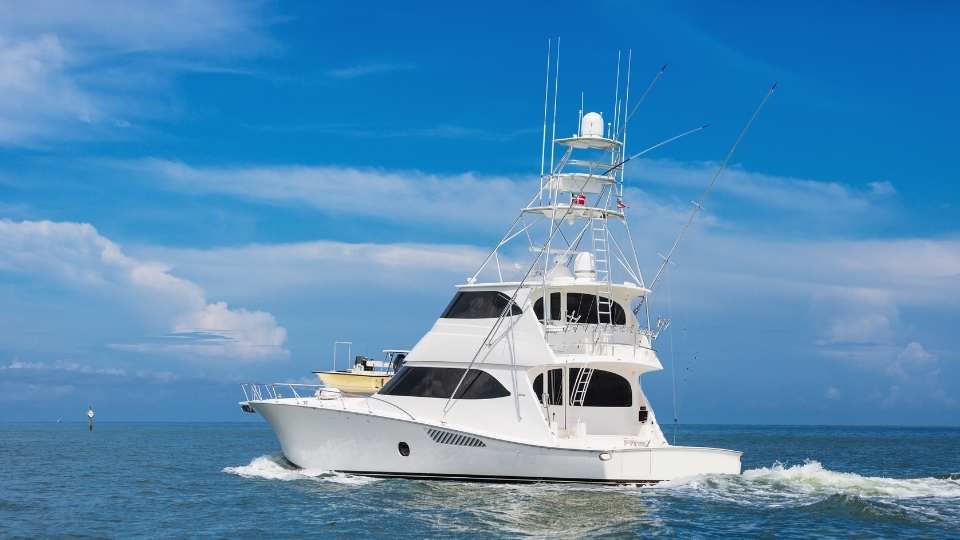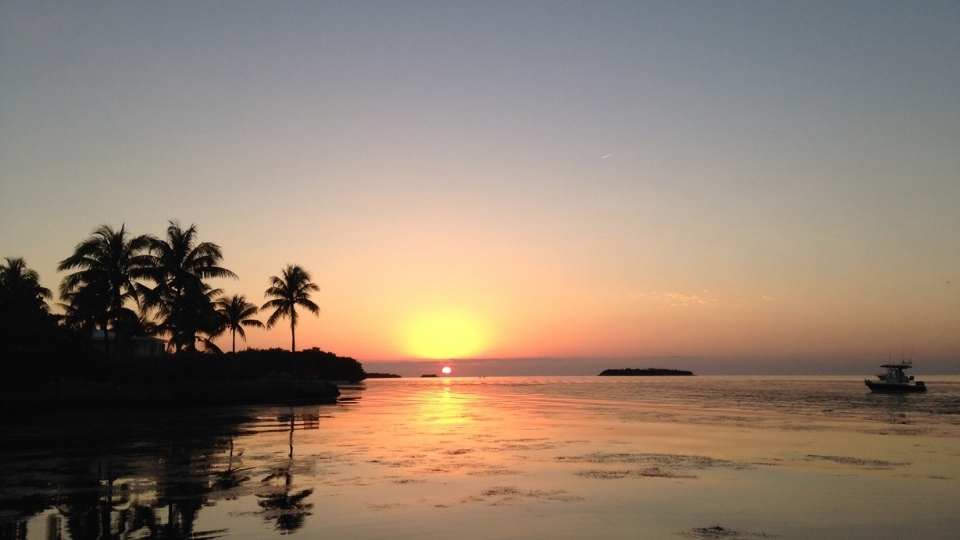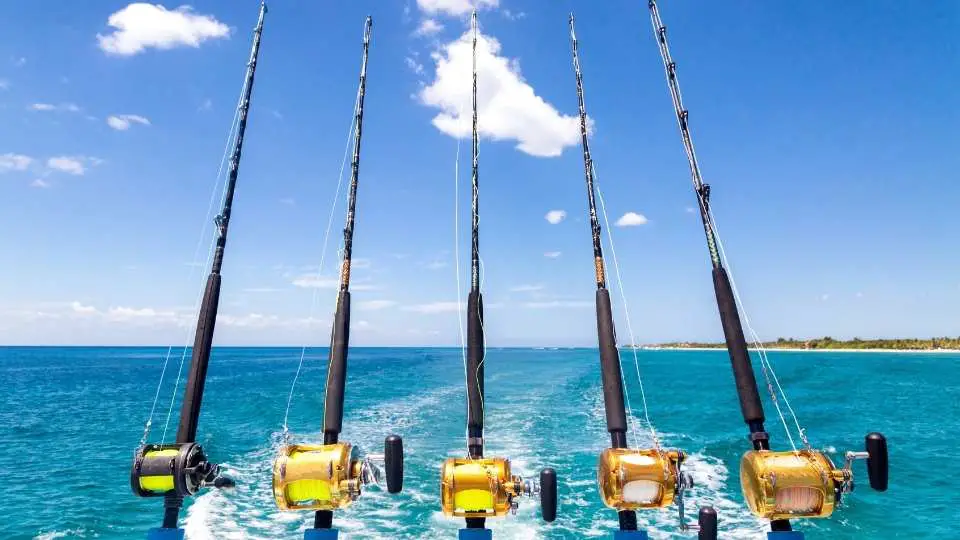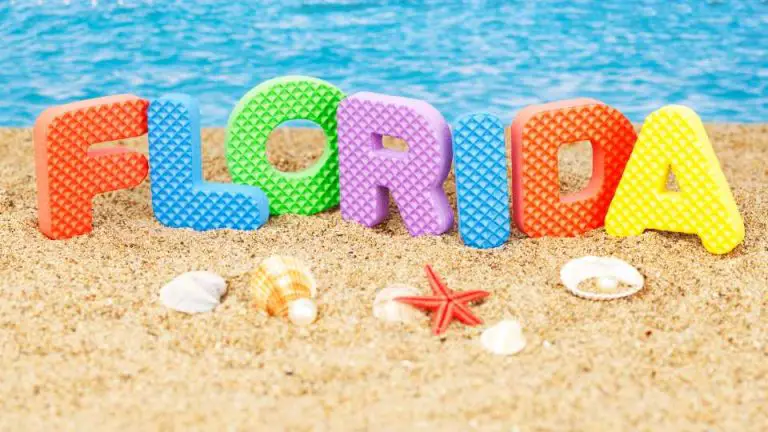Your Guide to Deep Sea Fishing in Florida: Exploring the Gulf’s Rich Waters
Florida’s coastline offers some of the best deep sea fishing opportunities in the world. From the Gulf of Mexico to the Atlantic Ocean, anglers can explore vast underwater landscapes teeming with prized game fish. Deep sea fishing in Florida typically takes place in waters over 100 feet deep, providing access to species rarely encountered near shore.
The Sunshine State boasts numerous prime deep sea fishing destinations. Islamorada in the Florida Keys is renowned for its undersea mounts that attract a variety of pelagic species. Fort Myers, on the Gulf Coast, serves as a launching point for extended trips targeting swordfish and marlin. Jacksonville, meanwhile, offers a mix of offshore and inshore fishing experiences.
Deep sea fishing charters are readily available throughout Florida, catering to both novice and experienced anglers. These guided excursions provide the necessary equipment, expertise, and vessels to venture far offshore. Popular catches include tuna, wahoo, mahi-mahi, and various billfish species, making Florida a true angler’s paradise.
Basics of Deep Sea Fishing
Deep sea fishing in Florida offers exciting opportunities to catch large ocean-dwelling species. This thrilling sport requires specialized techniques, equipment, and knowledge of seasonal patterns to maximize success.
Understanding Deep Sea Fishing
Deep sea fishing involves venturing far offshore into waters typically 100 feet deep or more. Anglers target pelagic species like tuna, marlin, and swordfish that roam the open ocean. Boats travel 20-50 miles from shore to reach productive fishing grounds.
Trolling is a common technique, dragging baited lines behind a moving boat. Bottom fishing targets species like grouper and snapper near underwater structures. Chumming attracts fish by dispersing cut bait in the water.
Fishing methods vary based on target species and conditions. Successful anglers adapt their approach throughout the day as fish behavior changes.
Best Seasons for Deep Sea Fishing
Florida’s warm climate allows for year-round deep sea fishing, but certain seasons offer better opportunities for specific species.
Spring (March-May) is prime time for wahoo, blackfin tuna, and mahi-mahi. Summer (June-August) brings peak action for blue marlin, white marlin, and sailfish. Fall (September-November) is excellent for yellowfin tuna and swordfish.
Winter (December-February) offers good fishing for grouper and snapper, though rougher seas can limit offshore trips. Water temperature and bait fish migrations influence fishing success throughout the year.
Essential Fishing Gear
Proper gear is crucial for deep sea fishing success and safety. Heavy-duty rods and reels are necessary to handle large fish and deep waters. 30-80 pound test line is common, with heavier line for bigger game fish.
Essential items include:
- Circle hooks (reduce gut-hooking)
- Wire leaders (prevent bite-offs)
- Variety of lures and live bait
- Gaffs and nets for landing fish
- First aid kit and sunscreen
Specialized equipment like downriggers, outriggers, and fighting chairs may be used on larger charter boats. Anglers should dress in layers and wear non-slip shoes for safety on potentially wet decks.

Florida’s Deep Sea Fishing Destinations
Florida offers world-class deep sea fishing opportunities along its extensive coastline. From the Panhandle to the Keys, anglers can find diverse marine ecosystems teeming with prized game fish.
Destin: The World’s Luckiest Fishing Village
Destin, located in the Florida Panhandle, has earned its nickname as “The World’s Luckiest Fishing Village.” The city’s proximity to the Gulf of Mexico provides access to deep waters rich with fish.
Anglers can target species like red snapper, grouper, and amberjack. The Destin Harbor is home to the largest charter fishing fleet in Florida, offering trips for all skill levels.
The area’s underwater terrain, including artificial reefs and natural ledges, attracts a variety of fish. Destin hosts several fishing tournaments throughout the year, drawing competitive anglers from across the country.
Miami: Vibrant Deep Sea Fishing Hub
Miami’s deep sea fishing scene is as vibrant as its culture. The city’s location offers anglers access to both the Atlantic Ocean and the Gulf Stream.
Popular catches include sailfish, mahi-mahi, and tuna. Miami’s waters are known for billfish, particularly during the winter months when sailfish migrate through the area.
The city boasts numerous marinas and charter options, catering to both novice and experienced anglers. Biscayne Bay, just off Miami’s coast, provides excellent fishing opportunities for those seeking a mix of deep sea and inshore experiences.
Key West: Gateway to the Gulf of Mexico
Key West, the southernmost point of the continental United States, serves as a gateway to some of Florida’s most productive fishing grounds.
The waters surrounding Key West are home to a diverse array of species, including marlin, wahoo, and kingfish. The area’s proximity to the Gulf Stream enhances fishing opportunities year-round.
Key West’s Historic Seaport offers numerous charter options for deep sea excursions. The city’s laid-back atmosphere and rich maritime history add to its appeal as a fishing destination.
Islamorada: Sportfishing Capital of the World
Islamorada, located in the Florida Keys, has rightfully earned its title as the “Sportfishing Capital of the World.” The area’s unique geography provides access to both Gulf and Atlantic waters.
The Islamorada Hump, an underwater mount located about 15 miles offshore, is a prime fishing spot. This structure attracts a variety of pelagic species, including tuna and marlin.
Islamorada hosts several prestigious fishing tournaments annually. The village’s numerous marinas and experienced charter captains cater to anglers of all skill levels.
Tampa Bay and Surrounding Areas
Tampa Bay and its surrounding areas offer diverse deep sea fishing opportunities. The region’s access to the Gulf of Mexico provides anglers with chances to catch grouper, snapper, and cobia.
St. Petersburg, located on the bay’s western shore, serves as a popular departure point for deep sea charters. The area’s artificial reefs and wrecks attract a variety of fish species.
Nearby Pensacola and Panama City Beach also offer excellent deep sea fishing. These Panhandle destinations provide access to the Gulf’s productive waters and host several fishing tournaments throughout the year.

Targeted Fish Species in Florida Waters
Florida’s deep waters teem with diverse and exciting fish species. Anglers can pursue powerful billfish, tasty tunas, flavorful bottom-dwellers, and formidable sharks in the vibrant offshore ecosystem.
Billfish: Marlin and Sailfish
Marlin and sailfish reign supreme in Florida’s deep seas. Blue marlin, reaching lengths over 12 feet, offer the ultimate big-game challenge. Sailfish, known for their speed and acrobatic leaps, frequent the waters off Miami and the Keys.
Peak sailfish season runs November to January and April to early May. The Florida Straits and Gulf Stream provide ideal hunting grounds for these majestic predators.
Trolling with ballyhoo or artificial lures proves effective for both species. Live-baiting with blue runners or pilchards can also entice strikes.
Tuna Species: From Blackfin to Yellowfin
Tuna fishing in Florida offers exciting action for multiple species. Blackfin tuna, abundant year-round, provide fast-paced light tackle fun. Yellowfin tuna, prized for their size and taste, frequent deeper offshore waters.
Blackfin tuna school near weed lines and underwater structures. Anglers target them with light spinning gear or fly rods. Chunking and live-baiting work well for larger specimens.
Yellowfin tuna require trips to deeper waters, often 30+ miles offshore. Trolling spreader bars or cedar plugs can produce results. Kite fishing with live baits like goggle-eyes proves highly effective.
Florida’s Snappers and Groupers
Bottom fishing in Florida yields a bounty of delicious reef dwellers. Red snapper, coveted for their firm white flesh, inhabit artificial reefs and natural bottom structures. Grouper species like gag and red grouper lurk near rocky ledges and wrecks.
Drift fishing with live bait or cut bait produces consistent results. Popular baits include sardines, pinfish, and squid. Heavy tackle and strong leaders are essential to pull these hard-fighting fish from their lairs.
Seasons and size limits apply to many snapper and grouper species. Anglers should consult current regulations before targeting these fish.
Sharks: The Apex Predators
Shark fishing in Florida offers heart-pounding action for the adventurous angler. Common catches include blacktip, spinner, and bull sharks. Larger species like hammerheads and tiger sharks also roam these waters.
Chumming attracts sharks to the boat. Large chunks of oily fish like bonito or mackerel make excellent baits. Wire leaders and circle hooks are essential for successful hook-ups and safe releases.
Many shark species are protected. Anglers should practice proper catch-and-release techniques to ensure the survival of these important predators.
Fishing Charters and Guided Tours
Florida offers numerous deep sea fishing charters and guided tours. These services provide anglers with expert guidance, equipment, and access to prime fishing spots.
Choosing the Right Charter
When selecting a deep sea fishing charter in Florida, consider the trip duration and boat size. Options range from 3-4 hour excursions to full-day adventures. Smaller boats typically accommodate 4-6 people, while larger vessels can host bigger groups.
Location is crucial. Popular areas include Pensacola, Destin, and Cocoa Beach. Each offers unique fishing opportunities and target species.
Price varies based on trip length, boat size, and included amenities. Expect to pay $650-$1,250 for a quality charter experience. Some charters specialize in specific types of fishing, such as wreck fishing or nearshore trips.
Read reviews and check captain credentials before booking. Experienced guides often have high customer ratings and positive feedback.
What to Expect on a Charter Trip
Deep sea fishing charters provide all necessary equipment, including rods, reels, and bait. Captains and crew offer guidance on fishing techniques and help with catching and handling fish.
Typical target species include tarpon, grouper, snapper, and mahi-mahi. Seasonal variations affect fish availability, so discuss expectations with your captain beforehand.
Most charters depart early morning for the best fishing conditions. Bring sunscreen, sunglasses, and non-slip shoes. Some boats offer amenities like restrooms and covered areas for comfort.
Fishing licenses are usually included in the charter price. Ask about fish cleaning services if you plan to keep your catch.
Safety Tips and Regulations
Safety is paramount on deep sea fishing charters. Listen carefully to the captain’s safety briefing before departure. Wear life jackets when instructed and follow crew directions at all times.
Be aware of weather conditions. Captains may reschedule trips due to rough seas or storms for passenger safety.
Florida fishing regulations apply to charter trips. Familiarize yourself with size and bag limits for target species. Captains typically inform guests about legal catches and help ensure compliance.
Bring motion sickness medication if prone to seasickness. Stay hydrated and protect yourself from sun exposure during the trip.
Respect marine life and the environment. Practice catch-and-release for unwanted or out-of-season fish. Follow proper fish handling techniques to minimize stress on released catches.

Fishing Techniques and Strategies
Deep sea fishing in Florida requires specialized techniques to target different species. Anglers employ various methods to maximize their chances of landing trophy fish in the open waters.
Trolling for Big Game
Trolling is a popular technique for targeting big game fish like marlin and sailfish. Boats move at a steady speed while dragging baited lines behind them. Lures and bait are positioned at different depths using outriggers and downriggers. Anglers often use a spread of multiple lines to cover more water.
Natural baits like ballyhoo and mullet work well for trolling. Artificial lures such as plugs and skirted lures also attract strikes. Varying speeds and zigzagging can trigger bites from predatory fish.
Trolling is especially effective along Florida’s Sailfish Alley, stretching from Miami to Jupiter. This area sees large numbers of sailfish during winter months.
Bottom Fishing for Reef Dwellers
Bottom fishing targets species like grouper and snapper that inhabit reefs and structures. Anglers use heavy tackle with strong line to fish near the seafloor. Circle hooks are common for catching and releasing fish safely.
Live bait such as pinfish or sardines works well for bottom fishing. Cut bait like squid or bonito chunks also attracts fish. A fish finder helps locate productive areas over reefs and wrecks.
Drifting is an effective method when bottom fishing. The boat moves slowly with the current while anglers work their baits near the bottom. Anchoring is another option for fishing specific spots.
Fly Fishing Offshore
Fly fishing offshore presents a unique challenge for anglers seeking a more active approach. Light tackle and specialized flies are used to target species like mahi-mahi and tuna. Sight-casting to fish near the surface is an exciting way to hook into big game.
Poppers and streamers are common fly patterns for offshore fishing. Anglers use heavy-duty 10-12 weight fly rods to cast large flies and fight powerful fish. Teasing fish to the boat with hookless lures can create opportunities for fly anglers.
Chumming helps attract fish within casting range. Anglers must be ready to make quick, accurate casts when fish appear. Proper technique is crucial for setting the hook and fighting fish on fly gear.
Conservation and Sustainability
Responsible deep sea fishing practices and adherence to regulations are crucial for maintaining Florida’s marine ecosystems. Anglers play a vital role in ocean health through their choices and actions while fishing in the “Fishing Capital of the World.”
Responsible Fishing Practices
Using circle hooks reduces the chance of gut-hooking fish, increasing survival rates for released catches. Anglers should avoid fishing in known spawning areas during breeding seasons. Proper handling techniques, like supporting a fish’s body and minimizing time out of water, are essential.
When targeting deep-dwelling species, venting tools or descending devices help fish overcome barotrauma and return safely to depth. Proper disposal of fishing line and other waste prevents marine life entanglement and habitat damage.
Understanding Regulations and Limits
Florida’s Fish and Wildlife Conservation Commission sets size and bag limits for various species to prevent overfishing. These regulations change periodically based on population assessments. Anglers must stay informed about current rules, including closed seasons and protected areas.
Some deep sea species, like goliath grouper, are catch-and-release only. Others, such as red snapper, have strict harvest windows. Permits are required for certain fisheries. Familiarizing oneself with these regulations ensures compliance and supports conservation efforts.
The Role of Anglers in Ocean Health
Anglers serve as frontline observers of marine ecosystems. Reporting unusual catches, injured animals, or signs of pollution helps scientists monitor ocean health. Participating in tag-and-release programs provides valuable data on fish movement and growth.
Choosing to target abundant species over threatened ones reduces pressure on vulnerable populations. Supporting local conservation initiatives, such as artificial reef projects or coastal cleanups, directly contributes to habitat preservation. Educating fellow anglers about sustainable practices multiplies the positive impact on Florida’s marine resources.
Planning Your Deep Sea Fishing Trip
Proper preparation ensures an enjoyable and successful deep-sea fishing expedition in Florida. Key considerations include packing essential items and selecting the right trip duration.
Packing the Essentials
Sunscreen with a high SPF is crucial for protection against Florida’s intense sun. Pack polarized sunglasses to reduce glare and improve visibility on the water. Bring motion sickness medication, even if you don’t typically experience seasickness.
A hat, light long-sleeved shirt, and quick-drying pants offer additional sun protection. Don’t forget a small cooler for snacks and drinks. Many charters provide fishing gear, but check in advance and bring your own if needed.
Selecting the Duration: Half Day to Multi-day
Half-day trips typically last 4-6 hours and are ideal for beginners or those with limited time. These excursions often target nearshore species and provide a taste of deep-sea fishing.
Full-day trips, lasting 8-10 hours, allow for travel to deeper waters and offer more opportunities to catch diverse species. Multi-day trips, ranging from overnight to several days, provide the most extensive deep-sea fishing experience.
Consider your experience level, physical stamina, and desired catch when choosing trip duration. Longer trips increase the chances of landing larger, more prized fish species.
Final Thoughts
Florida offers unparalleled deep sea fishing opportunities. The Atlantic Ocean and Gulf of Mexico provide diverse fishing grounds teeming with prized catches. Stuart stands out as a prime fishing spot on the Atlantic coast.
Anglers can target a variety of species in Florida’s waters. Barracudas frequent many fishing spots, providing exciting action for fishermen. Inshore fishing also yields excellent results for those preferring calmer waters.
The Sunshine State caters to both novice and experienced anglers. Charter services are readily available, offering expertise and equipment. Fishing regulations help maintain sustainable populations for future generations.
Florida’s deep sea fishing scene continues to thrive. With proper planning and respect for marine ecosystems, anglers can enjoy memorable experiences. The state’s commitment to conservation ensures its status as a top fishing destination for years to come.





